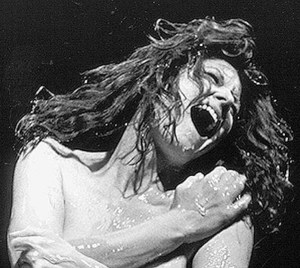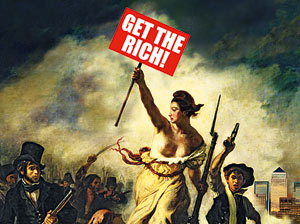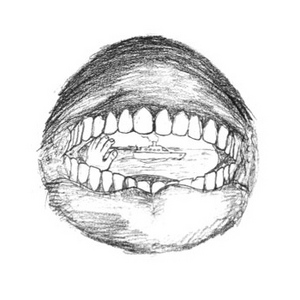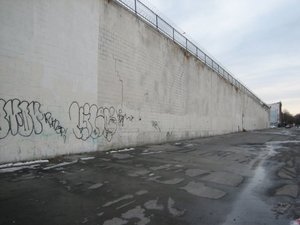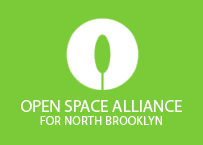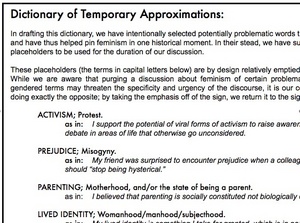This is an archive of the ArtCat Zine, 2007-2009. Please visit our new project, IDIOM.
News Archive
Though the NEA Four won the legal battle surrounding the veto of their grants, its difficult to count the organization itself as anything other than a casualty of the culture war. Operating with a budget of $176m in 1992 conservative pressure cut NEA funding to a low of $99.5m in 1996. Now, Barack Obama has approved a budget increase that would put NEA funding at $170m in 2010, still $6m below its 1992 levels, and that after 18 years of inflation. Furthermore, the NEA is still disallowed from funding individual artists, another concession made to a conservative Congress. All of the above damage was done while Clinton was in office, and now, with the Republican party on the verge of extinction, and Obama spending money like water, the left still lacks either the political clout or the desire to restore arts funding to what it was under Bush I. That, and Obama picked a Republican to lead the National Endowment for the Humanities, which is a bit like putting a jellyfish in charge of agriculture.
When the inevitable relegation of print publications to the digital ether of the interweb finally takes place numerous moments of lived experience will go extinct. In some cases - such as the floor-bound trajectory of countless subscription cards, falling, in twos and threes, out of newly received periodicals like so many airborne seedpods – this absence will be a good thing, if it is noticed at all. Others are more likely to be missed. For example, we will no longer be able to stand in front of a newsstand and survey the myriad visual strategies vying desperately for attention; still the swiftest method of adjudicating mass culture’s endless interpolation of the issues of the day. Indeed, our memories of significant events often turn out to be, upon examination, merely montages cobbled together from the images of various magazines, and we hold a special place for the uniquely well-tempered cover-shots that pierce, at moments, this constellation’s variegated history.
The financial crisis, however, has provided a problem for the great minds working in layout throughout the world. At once abstract and universal, the details of our current situation do not lend themselves, or have not yet, in any case, to being captured in any one, memorable image, or even set of images. Thus the newsstand has been treated to endless shots of piggy banks in various states of distress, downward slashing flow charts, and a great deal of big words, brightly colored – such as Newsweek’s decidedly comical “We Are All Socialists Now,” from a few months ago.
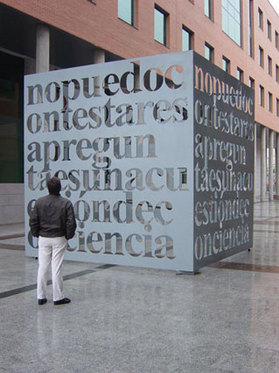
This week on Paper Monument's website Christopher Hsu contemplates the contemporary artist's relationship to work, grounding his meditation in the English-speaking artist's multivalent and frequent deployment of the word. The artist at work at once inhabits both the ideal sphere of gratuitous free action -- itself compelled by the art worker's very way of being in the world rather than some sort of compensatory system -- and at the same time a slightly distorted leftist legacy of creative or intellectual production aligned with its material or industrial counterpart. Even my own language here belies the pervasive entrenchment of this model -- how does one describe something as usefully ambiguous as cultural production without resorting to the language of industry?
Benjamin frames the affinity of the intellectual or the artist for the work of the proletariat class as a politically strategic relation, but we see its prototype even earlier when Marx postulates in the Theses on Fuerbach that the "philosophers have only interpreted the world, in various ways; the point is to change it." To change the world is to work -- to move from contemplation, to action, transforming the material, data, or social relations undergoing that action. The bifurcation of art from craft meanwhile -- of expert work and art work -- signals a means of action polar to the means of that action's intended effect. The contemporary artist, Hsu suggests, in her aggressive affirmation of her life's work, obfuscates the more deeply rooted and deliberate relationship to leisure at the core of her being in the world.
Tomorrow e-flux inaugurates its expanded downtown space with the opening of Unbuilt Roads, a new exhibition presented by Hans Ulrich Obrist. The show will function as an archive of unrealized artists projects and presents a companion exhibition to Obrist's 1997 book of the same title. Aggregating a set of orphaned or impossible projects, the exhibition seeks to mobilize a phantom and heterogeneous collectivity operating on a field of speculative reason and non-action. Whereas artistic agency may often be conceived as deliberate action founded on the contingent power of symbolic acts, the unrealized action then becomes a denser consolidation of that agency, divorced from the enabling or inhibiting potential of resources, exhibition opportunities and public access and opinion.
Also tomorrow is the fifth of six events accompanying On Certainty, a group exhibition and program curated by Sreshta Rit Premnath. At 3pm, legal scholar Lawrence Liang will present a paper at Bos Pecia gallery on the cultural and legal history of truth-making technologies -- lie detectors, narco analysis, focused and deliberate interrogation techniques and so on -- that have made a radical reemergence in both the popular imagination and law enforcement practice since 9/11. At the New School, meanwhile (as of today under student occupation, again) n+1 editor Mark Grief and several others host a panel titled What was the hipster?. And finally in Brooklyn, Vera List Center director Carin Kuoni will moderate a discussion at Smack Mellon between photographer Susan Meiselas and recent Guggenheim Fellow Carlos Motta as they discuss the documentary tendency in art making and, in particular, in Motta's project The Good Life, recently presented in New York at Creative Time's Democracy in America, Convergence Center exhibition at the Park Avenue Armory last fall.
According to our sources, David Yassky’s office is moving full steam ahead with the India Street mural project. Thanks to a seed donation of $8,000, the North Brooklyn Public Art Coalition is now accepting proposals for the huge concrete wall in between West Street and the East River in Greenpoint. The building is slated for demolition in Fall 2009, but in the meantime, NBPAC is eager to infuse the space with some public art. There are eleven artists, teachers, and even some India Street residents on Yassky’s panel. It’s a fairly open ended project, but they are looking specifically for art that celebrates arts in the community, so you’ll get points with panel members for keeping proposals family friendly. Still interested? Submission guidelines and applications are available here.
But hurry! Applications are due April 24th.
Rami Metal, from David Yassky’s office, who headed up the second NBPAC meeting, called the India Street mural initiative, “a kickoff project for the coalition…which will hopefully snowball into a lot more public art projects in the future.” So if murals aren’t your thing, feel free to contact Rami and NBPAC with a different proposal. Based on those attending tonight’s NBPAC meeting, the coalition is interested in anything from sound art to dance performances, as long as its accessible to the public, located in North Brooklyn, and, well, free. More info at Greenpointers, here.
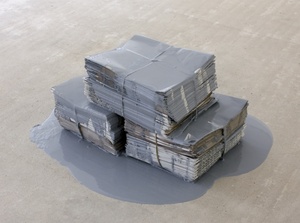
The Guggenheim museum recently announced the launch of Intervals, a new experimental programming series that will "allow the museum to respond quickly to innovations and new developments in contemporary art as they arise." The museum further sets an exciting tone for the upcoming series by selecting Julieta Aranda to install four new works across two of the museum's floors for its inaugural exhibition. Downtown, the New Museum prepares for next week's opening of Younger than Jesus, the institution's recently conceived generational triennial. Of the many ancillary events planned during the course of the exhibition the first discussion -- the irreverently (or cynically) titled panel Communism Never Happened -- is slated to bring together a group of Eastern European participants in the exhibition to reflect on coming of age in recently economically liberalized markets. Migrating Forms meanwhile has published the schedule for their 2009 film and video festival at the Anthology Film Archives beginning in two weeks. The program presents new feature-length work in a familiar festival format from Owen Land (his first film in over a decade) and Michael Gitlin, as well as features from Sharon Lockhart, Amie Siegel, Oksana Bulgakowa, and others.
E-flux just last week announced Unbuild Roads, a new exhibition curated by Hans Ulrich Obrist at it's Lower East Side location, marking the start a series of exhibitions and events at e-flux's newly opened lower level. Some weeks ago, a panel discussion on publishing and art journals was organized by e-flux at the same location.

Last night at the X Initiative, Lindsay Pollack led a panel entitled AFTER THE DELUGE? PERSPECTIVES ON CHALLENGING TIMES IN THE ART WORLD. The topic was clearly on the minds of many, as well over three hundred people packed the second floor of the old DIA space. With early Derek Jarman cycling eerily in the background, and the oblivious, hissing steam pipes quickly bringing the room to a broil, Pollack peppered Jefferey Deitch, of the eponymous Projects, Brett Littman, ED of The Drawing Center, Michael Rush, Director of the Rose Museum and Anya Kielar, doing double duty as an artist and as a former gallerist at Guild & Greyshkul.
The combination of the heat, the disparate panel, and the who's who crowd could easily have led to an heaping serving of platitude before everyone slunk up 10th avenue to one of the myriad openings on offer. Fortunately for all, Pollack took the opportunity to remind everyone in attendance how refreshing good journalism can be, and her guests, perhaps sensing that they were among friends, were remarkably candid and open, even as Pollack hit them with multiple follow up questions.
On Wednesday, local Brooklyn artists met at Brooklyn Brewery to drink free beer and discuss possibilities for public art in North Williamsburg. The area under consideration, City Council Member David Yassky’s District 33, stretches from McGolrick Park in Greenpoint to Grand Army Plaza, with all sorts of fences, sidewalks, medians, and road barriers in between.
The Open Space Alliance (OSA), a group advocating for both new and existing parks, has partnered with CM Yassky and various city organizations all aimed at beautifying public spaces and showcasing emerging local artists. “Art in the Parks,” a branch of the New York City Department for Parks and Recreation, has been supporting public art in all 5 boroughs for over 40 years. They look for site-specific work that integrates with the natural landscape and does not interfere with existing park functions or require unreasonable maintenance. The Percent for Art Program, initiated by Mayor Koch in 1982, requires that 1% of all new city-funded construction projects be put aside for permanent public artwork. Commissioned art can be in any medium, but the work must be integrated into the infrastructure. The Department of Transportation’s (DOT) Urban Art Program is more focused on temporary public art, and projects that integrate community outreach and art education. Artists must find an organization to collaborate with, and locations are limited to DOT owned sites. Other opportunities include a large mural on India Street, offered up by Palin Enterprises, and the Crest Hardware Art Show.
Wednesday night’s meeting, the first of the North Brooklyn Public Art Coalition, proves there are unlimited possibilities for public art in District 33. According to CM Yassky, NBPAC will be responsible for “scouting out ideal locations for public art, actively seeking out partnerships and funding for public art in the area, and keeping its members apprised of all public art opportunities.”
If you missed the meeting and want to get in on the action, you can contact Rami Metal in Yassky’s office at rmetal [at] council.nyc.gov or you can contact the organizations directly: OSA, Percent for Art Program, Urban Art Program.
Back to the Future: An Experimental Discussion on Contemporary Feminist Practice
Whitney Museum - 945 Madison Avenue, New York NY.
5th floor.
6:30, Rsvp required (by Thurs 17 Feb).
Artist Liz Linden and art historian Jen Kennedy have organized an experimental discussion on feminism this upcoming Saturday at the Whitney Museum. Linden and Kennedy, colleagues at the Whitney Independent Study Program, have structured the event around a critical lexicon of gendered social critique. Suggesting more benign and unspecific substitutions for the hot button words of this vocabulary, the two have constructed the schematics for a scenario in which the original words, by way of their omission, are poised to eclipse the blunting effects of functioning primarily as historical terms. The motive for the event is to get to the thing itself: the critical approach to gender and social relations against the storm of time that sometimes abrades even the sharpest of words.
The event takes place after the usual museum closing hours, on the fifth floor galleries. Attendance is free and open to public, but an RSVP is required. To register, please see instructions on the Whitney's website [PDF linked].
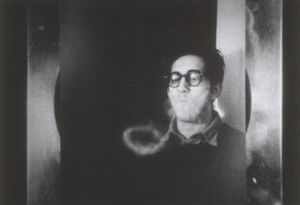
In a city full of underserved cultural stalwarts, the The Film-Maker's Coop has over the past 40+ years distinguished itself with a rich history of archival, programming, preservation and distribution of avant-garde and radically independent cinema. Before video made self-distribution an attractive possibility for motion picture artists, the Coop was as important a distributor of work as it was a social hub for underground and vanguard film-makers. The roster of historic works housed and distributed there is substantial, to say the least -- and certainly includes works increasingly visible to curators and art institutions rapidly discovering the American avant-garde of the past 50 years.
Art Fag City reports today that the Film-makers Coop has received an eviction notice from MoMA, by way of Art Radio International, who have been subleasing the current Coop headquarters since 2000. The Coop's location provides more than just office space; it's also where the thousands of films, videos, and personal archives of the many artists there represented reside. Safely moving such material would require significant funds currently unavailable to the Coop -- film in particular, for example, is very expensive to safely store and transport.
MM Serra and the FMC Board of Directors urges supporters to write "Department of Cultural Affairs Commissioner Kate D. Levin to support our efforts to remain either in our current building or to move to another, affordable city space. You can write to Kate D. Levin directly at this website."
You can learn more about The Film-Maker's Coop here. Their significant catalog of available films is available for online browsing here.
ZINE
HOME
TIPS / COMMENTS
CATEGORIES
CONTRIBUTORS
- Greg Afinogenov
- B. Blagojevic
- Adda Birnir
- Susannah Edelbaum
- Julie Fishkin
- Paddy Johnson
- Jessica Loudis
- Christopher Reiger
- Andrew Robinson
- Peter J. Russo
- Blythe Sheldon
- S.C.Squibb
- Hrag Vartanian

